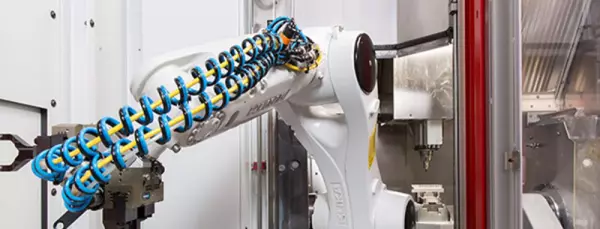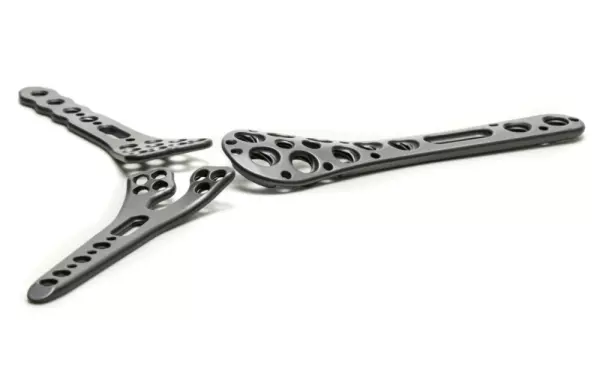
Of course, there are special requirements for implant production, especially when it comes to larg...
Portal and digital medical technology fair of the largest MedTech cluster in Germany

Of course, there are special requirements for implant production, especially when it comes to larg...

Titanium anodising type II dark anodising...
TYP-II titanium anodising - dark anodising for optimised surface properties TYP-II dark anodising...

An intervertebral implant is a surgical fixture designed to be retained within the intervertebral disc space between adjacent vertebrae. The device includes a plate portion 44 and spacer portion 42. Each of these components is provided with a spherical receptacle adapted to receive screws 46 and 48. These screws are inserted through the vertebral body and spacer, respectively, for maximum purchase and stability. An anti-screw back-out mechanism 70 is located on the first part and extends around the circumference of the implant.
This procedure involves inserting an artificial vertebral body into a patient's spinal column. During the procedure, the spine is stabilized with the help of the implant. The plates are usually customized to fit the specific needs of each patient. The plates are usually fixed to the vertebrae using screws. The rods are stronger and more durable. They are connected to the spinal column by hooks or pedicle screws.
A titanium plate 34 is implanted into the intervertebral space to stabilize the vertebra. These plates can be adjusted to fit the patient's anatomy, and are secured with screws. A rod is another type of intervertebral implant. This bone replacement uses strong and flexible metal and connects to the vertebra with screws. It is connected to the vertebrae with a screw or pedicle.
The anterior end 114 of the implant has a plurality of holes through which anchors 140 and screws 150 may extend. Each hole has a central axis that is angled relative to the transverse plane P-1. The fasteners can be positioned to be oriented toward either the superior or inferior vertebral body. The implants can also be curved or shaped to fit into narrow spaces. The screws can be attached to the flanges, which can provide extra support to the spinal column.
The lower part of the intervertebral implant has a plate-like structure and protrusions on both sides. The engagement elements are disposed in areas with greatest structural height. This design minimizes the overall height of the device. The screw is connected to the cage with screws in the vertebrae, and the screws are placed through the vertebrae. The implantation of a single screw is the most common form of intervertebral bone stabilization.
An intervertebral implant is a titanium device with a body and two spaced-apart side walls. Its central axis extends through the front and rear ends of the implant. Its first and second central axes are parallel to each other. The second and third central axes are in the sagittal plane. They are in the same plane as the insertion tool.
The implant 80 is similar to the implants 40 and 60. It has a spacer portion 82 that is configured to grasp the endplates of adjacent vertebrae and assist in expulsion resistance. A plate protrusion 84 is positioned between the spacer and plate portion 82. These two parts of the device are connected by a ring by a pivot 66. There are several advantages to this system and it is a viable alternative for patients with degenerative disc disease.
Become a digital exhibitor yourself in the online portal of the largest and best-known MedTech cluster region in Germany and inform the world of medical technology about your products and services as well as about news, events and career opportunities.
With an attractive online profile, we will help you to present yourself professionally on our portal as well as on Google and on social media.